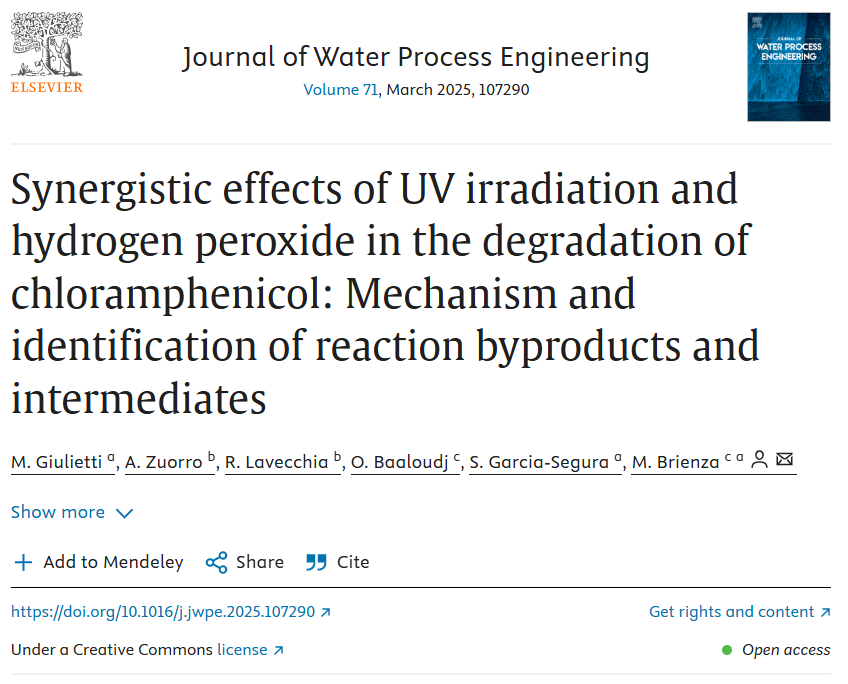
Published within the scope of the PRIMA-SAFE project, this study in Journal of Hazardous Materials presents a systematic approach to identifying pharmaceuticals in reclaimed water that may pose risks when reused for crop irrigation. It provides a basis for safer water reuse strategies in Mediterranean agriculture.
Key Findings
- Under optimized conditions (25 mM H₂O₂, 1240 μW/cm² UV intensity, pH 6.2), the process achieved ~100% degradation of a 50 mg/L CHP solution within 60 minutes.
- The combination of UV and hydrogen peroxide generated hydroxyl radicals (•OH), which played a key role in the non-selective degradation of CHP and its by-products.
- A detailed kinetic model and response surface methodology were used to optimize the treatment conditions, supported by experimental validation.
- The study identified multiple transformation by-products and proposed a comprehensive degradation pathway, confirming the breakdown of harmful intermediates into low-risk compounds such as carboxylic acids.
Implications
The findings demonstrate that UV/H₂O₂ treatment is a cost-effective, scalable, and low-input method for degrading resistant antibiotics like CHP. This process is particularly well suited for aquaculture and decentralized wastewater systems, where conventional treatments often fail to eliminate pharmaceutical residues and where the risk of antimicrobial resistance is significant.
Reference
Giulietti M., Zuorro A., Lavecchia R., Baaloudj O., Garcia-Segura S., Brienza M. (2025).
Synergistic effects of UV irradiation and hydrogen peroxide in the degradation of chloramphenicol: Mechanism and identification of reaction byproducts and intermediates.
Journal of Water Process Engineering, 71, 107290.
DOI: 10.1016/j.jwpe.2025.107290

